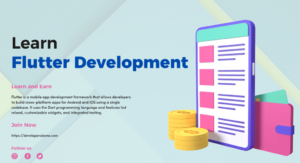If you’re developing a mobile app with Flutter, you’ll likely need to use dialogs at some point. Dialogs are an effective way to communicate with users and prompt them for input. In this blog post, we’ll cover everything you need to know about Flutter dialogs, including how to create them, customize them, and use best practices to enhance the user experience. Whether you’re a beginner or an experienced developer, this post will provide you with the knowledge and tools you need to implement dialogs in your Flutter app effectively.
Contents
What is Flutter Dialogs and Why are They Important?
Flutter Dialogs are a type of popup message that appears on top of the current screen in a Flutter app. They are used to display information or prompt the user for input. Dialogs are important in mobile app development because they allow developers to communicate with users in a way that is clear, concise, and visually appealing.
How to Create a Basic Dialog in Flutter?
Creating a basic dialog in Flutter is simple. You can use the showDialog method, which takes a context and a builder function as arguments. The builder function returns a widget that defines the content of the dialog. Here’s an example of how to create a basic dialog:
dartCopy code<code>showDialog(
context: context,
builder: (BuildContext context) {
return AlertDialog(
title: Text('Dialog Title'),
content: Text('Dialog Content'),
actions: [
TextButton(
onPressed: () {
Navigator.pop(context);
},
child: Text('Close'),
),
],
);
},
);
</code>
What are the Different Types of Dialogs in Flutter?
Flutter provides several types of dialogs, including AlertDialog, SimpleDialog, and CupertinoAlertDialog. AlertDialog is the most commonly used dialog and allows you to display a title, content, and actions. SimpleDialog is used to display a list of options, and CupertinoAlertDialog is used to display an iOS-style alert dialog. There are also custom dialogs that you can create to suit your specific needs.
How to Customize a Dialog in Flutter?
These can be customized in several ways. You can change the colors, fonts, and sizes of the text and buttons. You can also add images, icons, and animations to make the dialog more engaging. Here’s an example of how to customize the title and content of an AlertDialog:
dartCopy code<code>showDialog(
context: context,
builder: (BuildContext context) {
return AlertDialog(
title: Text(
'Custom Title',
style: TextStyle(
color: Colors.blue,
fontSize: 24,
fontWeight: FontWeight.bold,
),
),
content: Text(
'Custom Content',
style: TextStyle(
color: Colors.red,
fontSize: 18,
),
),
actions: [
TextButton(
onPressed: () {
Navigator.pop(context);
},
child: Text('Close'),
),
],
);
},
);
</code>
What are the Best Practices for Using Dialogs in Flutter?
When using dialogs in Flutter, it’s important to follow some best practices to ensure a smooth user experience. Here are a few tips:
- Use dialogs sparingly: Dialogs should only be used when necessary to avoid overwhelming the user with too much information.
- Keep it short and simple: Dialogs should be concise and to the point. Avoid using technical jargon or complex language.
- Use clear and consistent button labels: Button labels should clearly indicate what action will be taken when pressed. Use consistent labels across your app to avoid confusion.
- Test your dialogs: Test your dialogs on different devices and screen sizes to ensure they look and function properly.
Conclusion
Dialogs are an essential part of mobile app development, and Flutter makes it easy to create and customize them to suit your needs. By following best practices and using dialogs sparingly, you can enhance the user experience and

